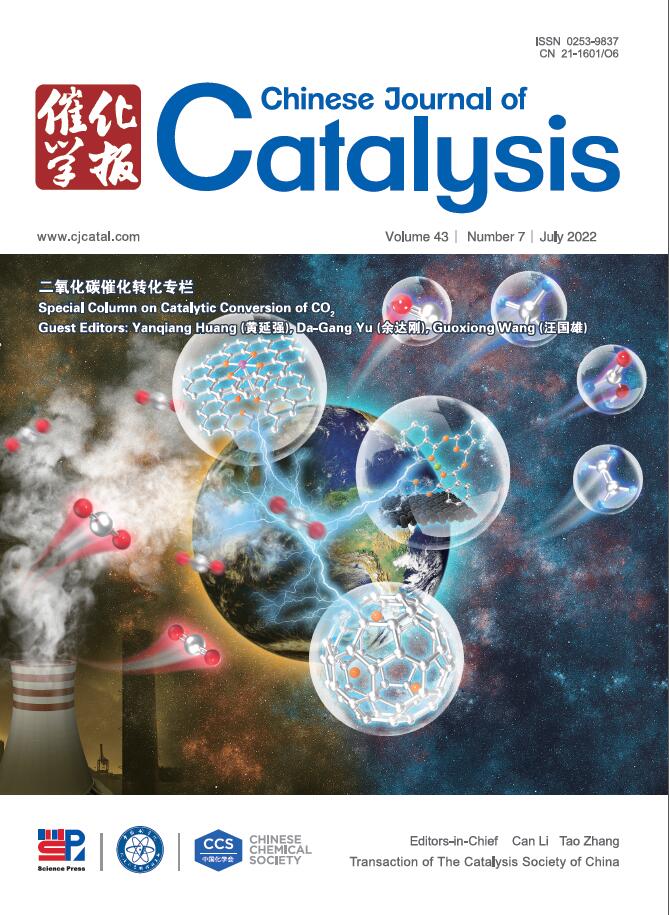Polarization-enhanced piezo-photocatalysis over hollow-sphere Bi4Ti3O12: Structure-property relationship and degradation mechanism
IF 17.7
1区 化学
Q1 CHEMISTRY, APPLIED
引用次数: 0
Abstract
Tetracycline hydrochloride (TCH) exists in various forms in aqueous solution due to pH changes, which not only alters the reactivity of TCH, but also affects the process of reactive oxygen species (ROS) attacking the molecule. Therefore, the rational design of piezo-photocatalytic materials coupled with a comprehensive understanding of the degradation mechanisms of various TCH species constitutes a critical approach to addressing tetracycline antibiotic contamination. In the design and preparation of piezo-photocatalysts, controlling the oxygen vacancy concentration is crucial as it governs the coupling efficiency between piezoelectric response and photocatalytic activity, as well as the strength of spontaneous polarization. Meanwhile, the morphology of the material is a key factor influencing the migration pathways of charge carriers. In this work, hollow spherical Bi4Ti3O12 was synthesized using an inorganic titanium source, demonstrating exceptional piezo-photocatalytic activity. The degradation rate was 1.57 and 5.29 times higher than that of traditional spherical and plate-like morphologies, with a rate constant of k = 0.127. In an innovative approach, density functional theory calculations of local softness and hyper-softness were employed to analyze the reactivity changes of TCH in its different deprotonated states toward reactive oxygen species. Combined with molecular electronegativity analysis, the factors influencing the degradation efficiency were identified. This study provides a solid foundation for developing efficient and environmentally friendly piezo-photocatalysts and offers new insights into the degradation mechanism of TCH.
空心Bi4Ti3O12的极化增强压电光催化:结构-性能关系及降解机理
盐酸四环素(Tetracycline hydrochloride, TCH)在水溶液中由于pH值的变化以多种形式存在,不仅改变了TCH的反应活性,还影响了活性氧(reactive oxygen species, ROS)攻击分子的过程。因此,合理设计压电光催化材料,并全面了解各种TCH的降解机制,是解决四环素类抗生素污染的关键途径。在压电光催化剂的设计和制备中,控制氧空位浓度是至关重要的,因为它决定了压电响应和光催化活性之间的耦合效率以及自发极化的强度。同时,材料的形貌是影响载流子迁移路径的关键因素。在这项工作中,用无机钛源合成了空心球形Bi4Ti3O12,表现出优异的压电光催化活性。其降解速率分别为传统球形和片状材料的1.57倍和5.29倍,速率常数k = 0.127。创新性地采用局部柔软度和超柔软度的密度泛函理论计算,分析了TCH在不同去质子状态下对活性氧的反应性变化。结合分子电负性分析,确定了影响降解效率的因素。该研究为开发高效环保的压电光催化剂提供了坚实的基础,并对TCH的降解机理提供了新的认识。
本文章由计算机程序翻译,如有差异,请以英文原文为准。
求助全文
约1分钟内获得全文
求助全文
来源期刊

Chinese Journal of Catalysis
工程技术-工程:化工
CiteScore
25.80
自引率
10.30%
发文量
235
审稿时长
1.2 months
期刊介绍:
The journal covers a broad scope, encompassing new trends in catalysis for applications in energy production, environmental protection, and the preparation of materials, petroleum chemicals, and fine chemicals. It explores the scientific foundation for preparing and activating catalysts of commercial interest, emphasizing representative models.The focus includes spectroscopic methods for structural characterization, especially in situ techniques, as well as new theoretical methods with practical impact in catalysis and catalytic reactions.The journal delves into the relationship between homogeneous and heterogeneous catalysis and includes theoretical studies on the structure and reactivity of catalysts.Additionally, contributions on photocatalysis, biocatalysis, surface science, and catalysis-related chemical kinetics are welcomed.
 求助内容:
求助内容: 应助结果提醒方式:
应助结果提醒方式:


